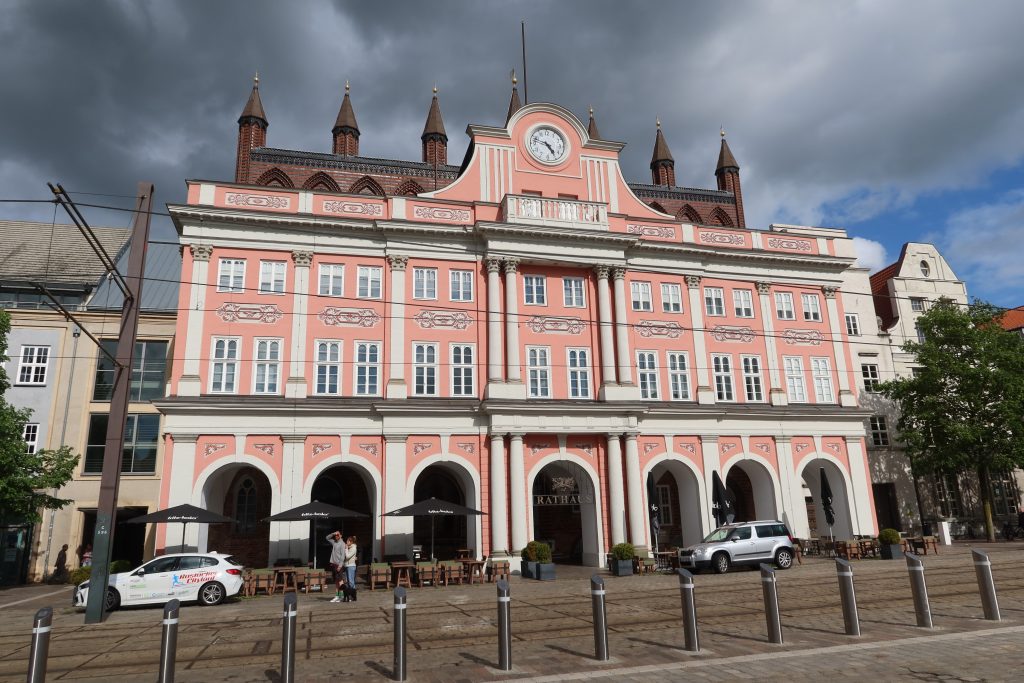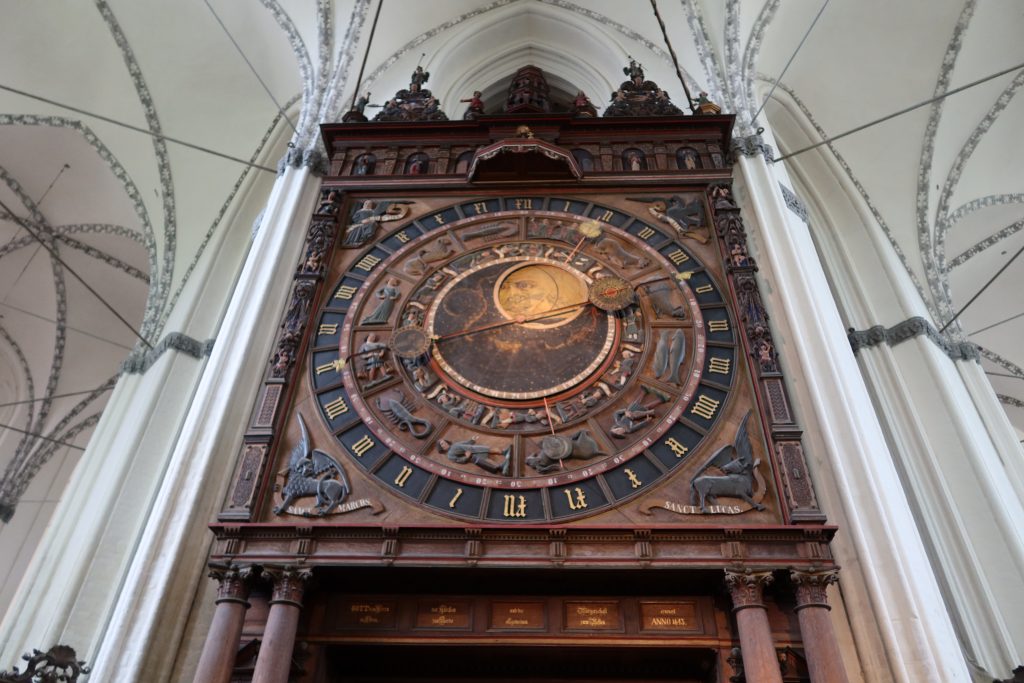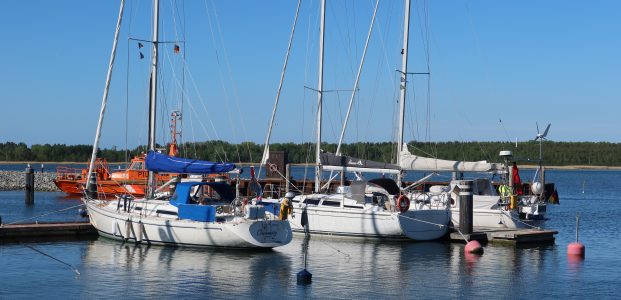The forecast for yesterday was pretty accurate and so the morning was spent hunkered down on board under the new cockpit cover enjoying the fact that we weren’t outside. The overnight winds were quite spectacular and the steps up to the jetty were at quite an alarming angle this morning as the whole pontoon had been yawing backwards and forwards during the night in the westerly gale. We enjoyed smugly watching and listening to the rain from under our cover. In between showers we made occasional forays out and checked in on the progress in the Mecklenburg landscape gardening competition taking place on the jetty. Who knew that such things even existed, but, it turns out they do. The teams seemed to be pairs and they had all been given identical materials and a detailed plan to work to, so all we could see was around a dozen identical little gardens with paving and a couple of flower beds emerging. The level of tension and excitement from watching this competition were ….. not palpable …. Still I am sure that the competitors were enjoying it, though how the judges told them apart when they were all identical was a mystery to us!
In the afternoon the weather cleared a little and we headed for a walk round Rostock. Rostock is another Hanseatic town and is the largest city in the German state of Mecklenburg-Western Pomerania. The earliest origins of the town were in the 11th Century when various settlements were founded by Polabian Slavs (a collective term applied to a number of West Slavic) tribes who lived along the Elbe river in what is now eastern Germany). However, in what might have been a fit of pique, Danish king Valdemar I set the town on fire in 1161 and after that it was settled by various German tribes. It grew rapidly and in 1251 became a member of the Hanseatic League. By the 14th century it was a powerful seaport town with 12,000 inhabitants and the largest city in Mecklenburg. It also became an important shipbuilding town. The wealth from this time is self-evident in the surviving buildings. However, because of its situation and importance as a manufacturing centre, it was heavily bombed during the Second World War. Targets included the Heinkel aeroplane plants and the shipyard, but lots of other historic structures and churches in the city centre were also heavily damaged. The main St.Nicholas’s Church was one of these though it has been restored. St Jacob’s Church was too badly damaged and had to be knocked down in 1960.

We went into St. Mary’s Church in the centre. This is one of the three largest in town and seriously impressive inside. it is built in the brick gothic style which is common around the Baltic and almost certainly achieved its objectives if those were to strike the fear of God into all who walked in …. The high altar was a gilded construction done by a Berlin craftsman in 1721 showing various biblical themes, but the stand-out thing for us was the Astronomical Clock. This was built in 1472 by Hans Düringer, a clockmaker from Nuremberg and it has three sections. At the top is an Apostle-(merry)-go-round giving an hourly performance of the apostles crossing before Jesus for a blessing before they enter into eternal bliss. The the last one, Judas, is shut out. In the middle is a clock with the daily time, the relevant zodiac sign, the phases of the moon and the month. Finally at the bottom is a calendar, which was valid until 2017. So it may have run out, but a calendar from 1472 – 2017 is still pretty impressive – more than a Google calendar can manage!

The next day we headed off again. With a fairly long run we decided to make an early start and left Rostock at 0605 and had breakfast on the way back down the river. Once back at the river entrance we hoisted full main and two-thirds jib and romped across towards Dasser Ort on a close reach at an average of over 7 knots. We kept this going just after 11am by which time we had rounded Dasser Ort, but sadly the wind then died, so the engine came on for a couple of hours. By 2pm though we were sailing again with a lovely F3 from the port quarter and this blew us all the way across to the Gelenstrom Channel which we entered by the Gellen lighthouse. As we entered this channel we took the main down and carried on under jib only until we got right in through the channel. We then motored the short distance across to the harbour at Barhöft and tied up on a stern buoy and bows to the jetty at 1545 – a trip of 54.3m and an excellent sail.

